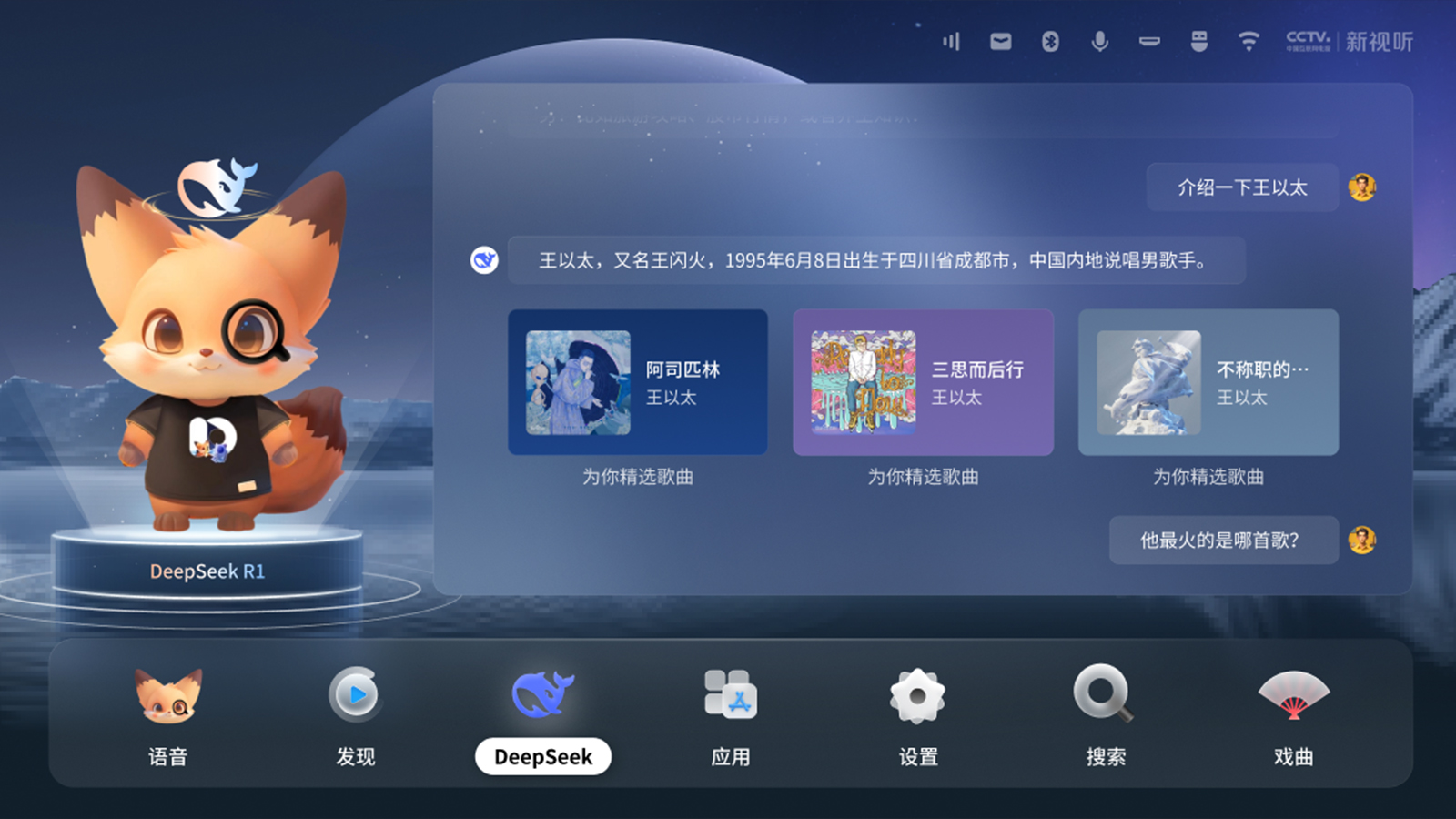Chinese AI model DeepSeek is being integrated into smart TVs — Skyworth G7F Pro understands local dialects and generates multimedia content
Smart TVs are going to get smarter with AI.

Chinese appliance manufacturer Skyworth (machine translated) announced it’s releasing a new smart TV equipped with DeepSeek.
The Chinese-developed LLM DeepSeek made waves when it was introduced because of its relatively low cost of training. It has reached the point that AI chip maker Nvidia lost over half a trillion dollars in market value because people thought companies would no longer buy its overpowered chips to train the next generation of AI. These advancements have led many companies to incorporate DeepSeek into their products; this includes Microsoft, which said that its Snapdragon X Copilot+ PCs will soon get local DeepSeek R-1 support. Likewise, Skyworth is integrating DeepSeek into its next generation of smart TVs.
Skyworth said that its Kukai AI OS will get access to the DeepSeek R-1 Inference open-source model, which will allow it to support dialect recognition and fuzzy semantic understanding. This means users can talk to their TVs in their local dialects, which is quite important in China, given that it has around seven to ten main language groups, each with several dialects. The TV’s fuzzy semantic understanding will also help the TV recognize context and consider vagueness and ambiguity when processing language data.
In addition, the Skyworth G7F Pro’s AI is designed for various scenarios. The company said it can generate ambient music and support interactive painting for entertainment, serve as an “AI oral spanning partner,” create picture books for education, and create travel plans for the entire family, including itinerary bookings and schedule reminders.
It’s unclear if the TV needs to be connected to the internet for its AI model to access these functions. However, given that DeepSeek is relatively lightweight, it’s not impossible for a smart TV to run it locally if it has a chip with an embedded NPU with enough power to handle it. But even if the AI functions are handled off the device and on a server, it wouldn’t be taxing for the company as you could run DeepSeek relatively affordably, as a UCLA-Berkley research team has proven.
Stay On the Cutting Edge: Get the Tom's Hardware Newsletter
Get Tom's Hardware's best news and in-depth reviews, straight to your inbox.

Jowi Morales is a tech enthusiast with years of experience working in the industry. He’s been writing with several tech publications since 2021, where he’s been interested in tech hardware and consumer electronics.